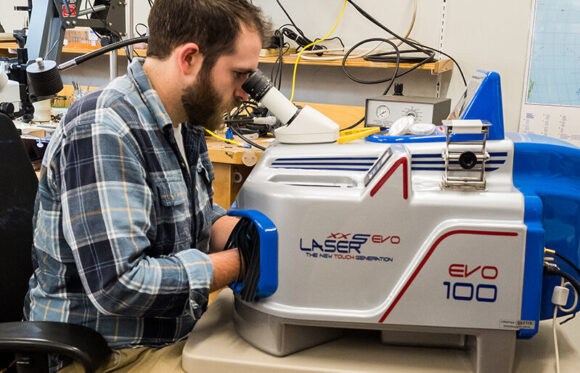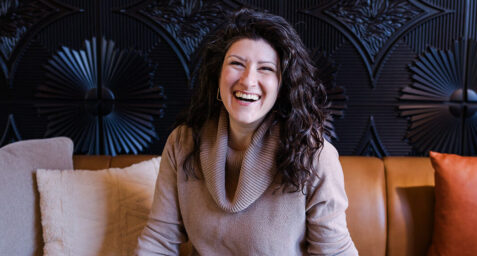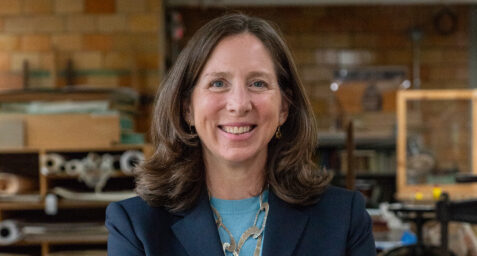A State-Of-The-Art Tradition

Categories
Jewelry Making & Repair
At NBSS though, the Jewelry Making & Repair program (JM) is proof that embracing visionary technology can enhance traditional handwork without replacing it. Under the leadership of Department Head Ann Cahoon JM ’02, the program has acquired five new high-precision microscopes that allow students to more easily work on the complex designs that have become common in contemporary jewelry.
“There’s a constant dialogue between what’s happening in the business and what’s happening in our shop,” Ann explains. “How do we respond to what our students need?”
Considered the gold standard in the jewelry industry, these “Leica A60 F” stereo microscopes are well-suited to engraving and stone setting. Since many employers now use these instruments, training on them makes NBSS students more competitive candidates while on the job market, and more valuable employees once hired.
The high precision microscopes were purchased with generous grant funding from the George A. Ramlose Foundation, Massachusetts Charitable Mechanic Association, Ellen Abbott Gilman Trust, and Long’s Jewelers — each of which understands that the industry’s future depends on educating skilled craftspeople.
Recent graduate Elizabeth Quick JM ’19 had the good fortune of being the first student to work on an NBSS bench equipped with its own microscope. Long’s Jewelers, who help fund the instruments, ultimately hired Elizabeth as an apprentice bench jeweler upon graduation.
“Most of these tools are labor savers,” Elizabeth says. “They’ll save time and effort. But they aren’t really replacing anything else. They are enhancing the jeweler’s vision. We still have to be trained to be competent bench jewelers.”

Elizabeth’s success is proof that JM grads are highly sought-after.
Bench jewelers must be well-rounded craftspeople in the industry. They fabricate, repair, polish, and more. JM is the only significant program in the United States to teach bench jewelry, as opposed to more common jewelry design programs.
Several recent graduating classes have seen a job placement rate of 100 percent. This is due, in part, to a shortage of bench jewelers across the country, from both retirements of smaller shops and consolidation within the industry.
Before attending NBSS, Elizabeth struggled to make a living with a fine arts degree in sculpture. So, being recruited before graduation from NBSS felt triumphant.
“I was used to the wandering confusion that a lot of art school grads deal with,” Elizabeth shares. “I felt like I had a sense of purpose this time around.”
JM program grads have a reputation for being prepared for all types of working environments. Some will begin their careers in high-tech shops with CAD software, CNC machines, laser welders, and stereo microscopes. Others will work in mom-and-pop shops that haven’t changed much in 100 years.
For that reason, the educational focus at NBSS remains centered on the craft, not the latest technology.
“The industry might be changing, but our job as bench jewelers doesn’t. We still have to polish that piece. We still have to set that stone,” Ann says. “Technology is just another tool on our bench.”
This article is from our 2019 Annual Report. See all the stories here, or read more issues.

